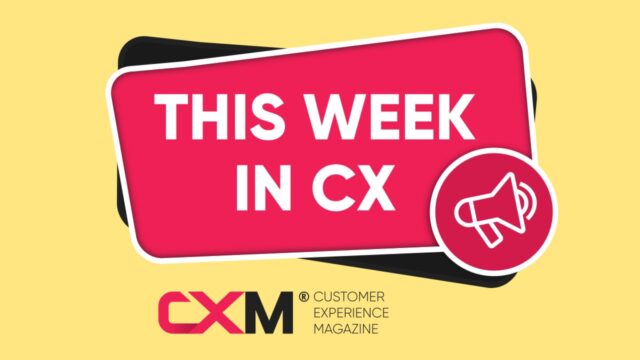October 03, 2025
Employee Engagement Ideas That Actually Work: Data-Backed Plays to Lift Retention, Productivity, and CX

Keeping people genuinely excited about their work is getting harder. Gallup says only about 21% of employees feel engaged right now, and that lack of connection costs companies an estimated $8.8–$8.9 trillion a year. It shows up as slow projects, missed ideas, and talented people quietly drifting away.
There’s also a big gap between what companies promise and what employees feel. Eighty-seven percent of employee-experience experts believe a great workplace experience helps attract and keep talent, yet only 51% of employees say their organization actually delivers. That disconnect is feeding burnout and a rise in “clock-botching” – doing just enough to get by.
Work itself is changing too. Hybrid schedules are still shaking out. Burnout hasn’t gone away. A younger generation wants more recognition, clear growth paths, and real control over how and when they work. Complimentary snacks and casual Fridays aren’t enough anymore.
To fix disengagement, companies need employee engagement ideas that feel real, built on listening, precise data, and practical tools. When that happens, performance improves, innovation emerges, customers notice the difference, and great people stay.
Why You Need Good Employee Engagement Ideas
Practical employee engagement ideas can significantly alter how well a business performs. Better morale is just the baseline. The real benefits extend far beyond what most companies realize. Keep staff engaged, and Employee experience ROI skyrockets, with:
- Better results and profitability: Gallup’s research found that highly engaged teams are 23% more profitable, take 41% fewer sick days, and have 43% lower turnover. That means fewer hiring headaches and more money staying in the business.
- More innovation: Workplaces with a strong employee experience are twice as likely to innovate and get over half their revenue from new products. When people feel heard, ideas flow.
- Happier customers: There’s a direct line from engaged employees to satisfied customers. Companies with great EX report double the customer satisfaction scores of those with weak EX.
- Revenue growth and retention: Employees who feel satisfied, empowered, and valued can drive more than 50% revenue growth compared to disengaged teams. Additionally, while 87% of EX experts believe a strong experience helps retain and attract talent, many organizations still fall short, leaving room for competitors to capitalize.
Real companies prove the point. Dennemeyer, working with SurveyMonkey, built an open listening culture that rebuilt trust and improved long-term engagement. Arrowhead revamped its recognition program and cut turnover by 49%, saving millions in recruiting and training costs.
For leaders looking to increase employee engagement, this is the “why” that matters: stronger business results, happier customers, and a workforce that actually wants to stay and grow.
High-Impact Employee Engagement Ideas to Test
You don’t need a grand transformation to lift employee engagement. Pick a few moves that fix everyday friction, make them visible, and keep going. The right mix of employee engagement ideas plus simple employee engagement tools can change the mood fast, and the numbers that follow.
1. Make Pay, Benefits, and Perks Feel Fair
People judge fairness quickly: pay, benefits, time. If those feel off, everything else struggles. Start by pressure-testing your compensation bands against the market, then give people perks they’ll actually use, like a wellness allowance, learning budget, or help with childcare. It’s incredible how far a small, flexible stipend goes when it’s framed as trust.
Time is a benefit too. Offer control over when work happens, not only where. Workers consistently say that matters more now, particularly as life becomes more complicated. Tools can help you figure out what people value. For instance, Goldman Sachs used Qualtrics to identify the family and wellness benefits that mattered most to its new staff members.
Want to check your compensation package is making the right impact? Watch acceptance rates on offers, early-tenure retention, and the uptake of your perks. Add one line to your next pulse survey: “Do you feel our rewards package fits your life right now?” This is the bedrock that lets the rest of your employee engagement programs work.
2. Provide Recognition That Feels Real (Not Performative)
Most of us don’t need a parade. We do need to know our work mattered this week. Frequent, specific thanks – from a manager or a peer – does more for loyalty than a once-a-year trophy. Gen Z, in particular, expects that rhythm of feedback and appreciation.
You don’t need to throw a parade every time someone accomplishes a task. Keep it simple. A kudos channel in Slack or Teams. A two-minute moment in the team meeting. A short note that ties the praise to your values (“you lived this value when you did that thing”). If you want a light layer of employee engagement software, choose tools that make recognition easy and visible. There are plenty of solutions that can help you distribute rewards automatically.
An example: Robidus surveyed staff with Culture Amp and heard a clear message: people didn’t feel seen. Leaders rebuilt how they reward and recognize employees based on what they said they valued. The result was stickier loyalty and more of that extra effort you can’t force.
You’ll know it’s working when recognition shows up unprompted, not just top-down. And when you see engagement scores nudge up alongside tenure. That’s the compounding effect of the right employee engagement ideas.
3. Get Onboarding Right From the Start
The first few weeks decide everything. A clumsy, silent welcome can undo months of hiring effort. New hires need clarity and connection, a rough plan for the first three months, a person they can lean on, and a chance to ask fundamental questions early. Keep an eye on what happens: do people settle in, learn fast, and stick around? Their feedback and early turnover rates will tell you.
At Sharesies, Culture Amp data showed where onboarding was falling short. They simplified surveys to make them short and actionable, reaching 95% participation. With fast feedback, they addressed sticking points, improved early retention, and helped people ramp up more quickly.
4. Make Internal Service Feel Like Customer Service
When people need help with tech, HR, or basic admin, the response shapes how they feel about the company. Slow, confusing service erodes trust. Quick, clear support builds it.
Start with basics: a single place to log requests, clear response times, and real humans when things get tricky. Add smart tech where it helps. AI chatbots can answer simple IT or HR questions instantly and route complex issues to the right person. Platforms like Zendesk and Freshworks have shown how AI can push IT from “hidden back office” to a real driver of the employee experience.
Wahi, a real estate tech firm, keeps engagement high without even having a formal HR team. They use lifecycle check-ins and quick surveys to spot and fix tech or support pain points early. Employees get what they need faster, and morale stays steady.
5. Build a Workplace People Can Shape
Empowerment in today’s workplace is all about giving people a say in how and when they work, and ensuring everyone has equal access to tools and opportunities. Hybrid has made this harder, but also more critical.
That’s why your employee engagement ideas need to consider the environment your teams work in. Think about job crafting – letting people adapt tasks to their strengths. Support employee resource groups (ERGs) so communities can form naturally. Give remote and on-site workers the same collaboration tools and meeting experiences. Invest in inclusive design for your spaces; even a small stipend to set up a better home office matters.
Some companies are also rethinking their offices as connection hubs. PoeticGems’ new HQ is a great example of merging physical and digital to make employees feel they belong. Elsewhere, ProntoForms used HR tech to support a distributed workforce and make sure remote staff had the same opportunities and sense of belonging as HQ employees. The payoff was stronger retention and a clearer feeling of inclusion across the board.
When you see fewer complaints about access or fairness, and participation in ERGs or cross-office projects goes up, you’ll know your empowerment efforts are landing.
6. Keep People in the Loop
If employees don’t know what’s going on, they fill the blanks, often with worry. Honest, regular updates from leaders cut through that faster than any perk.
Good communication doesn’t mean more memos. It’s about the right rhythm. A quick weekly update, a short town hall with time for questions, or a space where people can share wins and shout-outs. Internal tools like ContactMonkey or Staffbase help, but tone matters more than tech, as does making sure everyone can take part in the conversation.
ThirdBridge learned this the real way. Using Officevibe, they opened a feedback loop that let employees ask hard questions and get straight answers. Transparency rose. So did trust, and with it, engagement scores.
7. Show a Future People Can Grow Into
Most employees aren’t chasing constant praise; they’re chasing progress. If they can picture a path forward, they’ll stay and put in extra effort.
Growth isn’t only formal training. It’s stretch projects, job shadowing, mentoring, or a budget for conferences and courses. Managers play a huge role here; a simple career conversation every few months can matter more than a polished program.
Zillow tapped Qualtrics data to understand what staff members needed to excel in their roles. The company used that insight to shape clearer career paths, and retention among early-career talent improved.
Watch whether people apply internally before they look elsewhere, how many step into new roles, and whether “I can grow here” shows up in engagement surveys. If those numbers rise, your employee engagement ideas are landing.
8. Protect Wellbeing and Tackle Burnout Early
Burnout is becoming a significant business risk. Long hours, digital overload, and unclear boundaries push good people out. In some industries, the impact is particularly significant – around 84% of healthcare workers feel burnt out.
Wellbeing isn’t spa days. It’s giving people the room and support they need to stay healthy. Offer meaningful time off, real mental-health help, and make it safe to use them. Many teams add wellness stipends, quiet Fridays, or no-meeting blocks. Data can also be helpful, tracking stress or workload so managers can act before burnout occurs.
Kroger used Qualtrics check-ins this way; staff reported less burnout and higher engagement once leaders responded. Watch sick leave, stress scores, and use of benefits; if they move the right way, you’re making progress.
9. Bring Play and Community Into Work
Connection fuels employee engagement. When people know each other beyond tasks and emails, collaboration gets easier and morale goes up. Playful, low-pressure challenges can spark that.
Some teams run wellness or fitness challenges with small prizes. Others host hackathons, volunteer days, or simple social clubs – running groups, book clubs, cooking meetups. It’s not about forced fun; it’s about giving space for people to find each other.
Stingray made feedback playful with Workleap. People felt involved in decisions, shared more ideas, and solved problems faster. You’ll know these employee engagement ideas work when sign-ups for optional events climb and survey comments mention connection and camaraderie. The right touch of play makes work feel less transactional.
10. Turn Reviews Into Real Conversations
For many, the annual review is just a box to tick. You sit through a long meeting, hear about old mistakes, and leave unsure what’s next. It’s demoralizing, and it doesn’t keep people engaged.
Frequent, lighter conversations work better. A manager checking in every month or quarter can catch roadblocks early and talk about growth before frustration sets in. Peer feedback helps too, as long as it’s quick and doesn’t become another spreadsheet exercise.
The Iowa Department of Transportation made this switch with Qualtrics. Managers began meeting with staff more often and sharing clear, forward-looking feedback. People felt supported instead of judged. Trust scores rose (by 20%), and so did overall engagement.
11. Let Data Guide and Prove Employee Engagement Ideas
Too many engagement efforts rely on gut feel. Data changes that. Short pulses, sentiment checks, and even support ticket trends show where people struggle. But the key isn’t endless feedback, it’s acting on it and telling staff what changed. That loop builds trust.
OLX Group used Culture Amp to rethink its surveys and spot the real reasons people were leaving. With that insight, leaders tackled the issues directly, and attrition dropped. They also found that employees were more likely to believe that their feedback would actually drive changes.
You’ll see the payoff when engagement scores climb, retention improves, and employees stop saying “nothing ever changes.”
Employee Engagement Ideas: Common Pitfalls & How to Avoid Them
Many employee engagement programs start strong but fade quickly. It usually comes down to a few common traps.
One is treating engagement as HR’s side project. When only one team owns it, momentum dies. The companies that keep people involved usually spread responsibility: managers lead everyday actions, HR coaches and tracks, IT handles tools, and execs talk openly about progress.
Another is initiative fatigue. If employees are asked for feedback but nothing changes, surveys become noise. It’s usually better to run fewer pulses and always close the loop: “Here’s what we heard. Here’s what we’re trying next.”
Equity is another watch point. Hybrid and remote work make it easy for some voices to dominate while others get overlooked. Be deliberate about who’s included in listening sessions and who gets access to growth opportunities.
Data privacy can derail good intentions. Gathering engagement analytics without clear rules spooks people. Be upfront about what you track and why. If you’re adding new employee engagement tools, keep them simple to use.
Quick Tips for Implementing Engagement Programs Successfully
The toughest part of improving employee engagement isn’t new ideas, it’s making them stick. Big rollouts stall when they try to solve everything, instead:
- Start simple: Pick one clear pain point like clunky onboarding, weak recognition, or rising burnout and run a pilot. Measure quietly. If it moves the needle, expand.
- Get everyone Involved: Getting different parts of the business involved early also makes a huge difference. HR can’t do it alone. IT keeps the tech smooth, communications teams shape the story, operations know where work gets stuck, and finance will want to see the ROI. Showing how lower turnover and better productivity save money helps unlock budget.
- Don’t overdo surveys: Keep an eye on survey fatigue while you build. Fewer, sharper questions work better than long forms people ignore. Always close the loop: “Here’s what we heard, here’s what we’re trying”, so employees see the point.
Trends Shaping the Future of Employee Engagement Ideas
Work keeps changing, and so do employee engagement ideas. A few shifts are already shaping what the next few years will look like. We’re seeing AI that actually helps people by listening to employee sentiment automatically, or providing real-time coaching.
Workplace schedules are becoming more flexible. People now care more about when they work than where. Compressed weeks, flexible hours, or staggered shifts help reduce burnout and keep good people around. Talent flexibility is becoming important too.
Some companies treat their workforce like a skills network. Employees can pick up short projects or stretch assignments, learn, and move around instead of leaving to grow.
Plus, purpose is becoming a serious driver of employee engagement. Younger workers want to know their job connects to something meaningful – whether that’s sustainability, customer impact, or local community work. Engagement rises when they can see that link.
From Ideas to Lasting Engagement
Keeping people engaged isn’t about perks or ping-pong tables. It’s about trust. Listen well. Act on what you hear. Show how work connects to the bigger picture. Do that, and the rest: innovation, retention, even customer loyalty, tends to follow.
Start small. Fix one pain point and measure what happens. If turnover drops or productivity improves, share the story and expand. Tools and data help, but only if they serve people, not replace conversations.
Real employee engagement programs don’t have to be flashy. They just have to be honest, data-informed, and consistent. Do that, and you’ll increase employee engagement in ways employees feel, and the business can prove.


